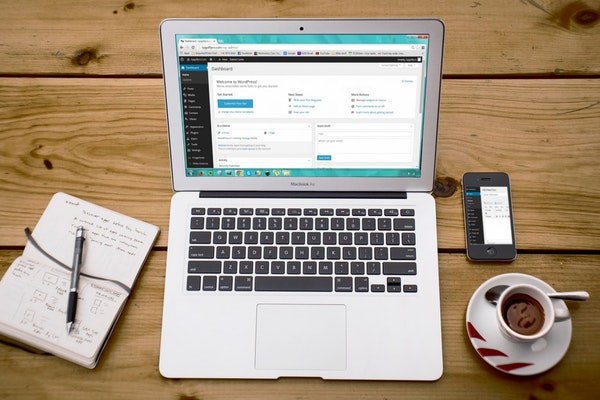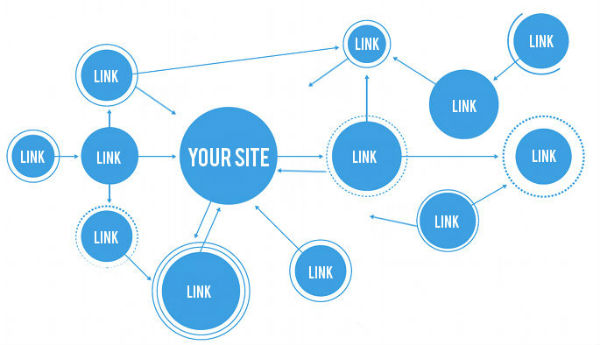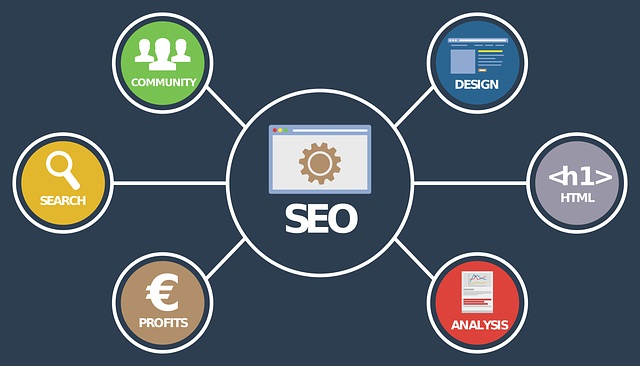Digital art is a modern form of artistic expression that offers limitless creative possibilities. Whether you’re a seasoned digital artist or just starting out, this section will provide you with valuable tips and techniques for digital art creation. By harnessing these tips, you’ll be able to unleash your creativity and elevate your skills to new heights.
In the digital art world, there are no boundaries when it comes to exploring your artistic vision. With the right tools, software, and techniques, you can create stunning digital masterpieces that captivate and inspire. From choosing the right digital tools to refining and polishing your artwork, this article will guide you through the process and help you unlock your full creative potential.
What is Digital Art?

Digital art is a form of artistic expression that utilizes digital technology to create visually stunning masterpieces. Unlike traditional art forms, digital art relies on computers, software, and digital tools to unlock endless creative possibilities. From digital paintings and illustrations to 3D modeling and photo manipulations, digital art spans a wide range of styles and genres.
This modern art form allows artists to explore their creativity and experiment with various techniques in a digital environment. Through the use of sophisticated software and digital tools, artists can push the boundaries of their imagination, adding depth, texture, and effects to their creations.
“Digital art is a revolution in the art world, a fusion of artistic talent and technological innovation,” says renowned digital artist Jane Smith. “It opens up new avenues for self-expression and allows artists to create vibrant and dynamic works that captivate audiences.”
How Is Digital Art Created?

The process of creating digital art involves several steps. To bring their artistic vision to life, artists need to have the right digital tools at their disposal. This includes a powerful computer or laptop, graphic design software like Adobe Photoshop and Illustrator, and a high-quality drawing tablet.
Once equipped with the necessary hardware and software, artists can begin the creative journey. They start by selecting the appropriate software that aligns with their creative style and preferences. With a wide range of options available, artists can choose software that suits their specific needs and offers the features they require to bring their ideas to fruition.
With the digital canvas ready, artists can unleash their creativity and explore various styles and techniques. Whether sketching, painting, or designing, the digital medium allows for endless experimentation and the freedom to push the boundaries of traditional art.
One of the advantages of digital art is the ability to work with layers. Artists can utilize layers to organize their artwork and make independent adjustments to different elements. This non-destructive editing process makes it easier to refine and iterate on the digital creation.
Effects also play a vital role in digital art. Artists can incorporate gradients, filters, and lighting effects to enhance the visual appeal of their artwork, adding depth and complexity to their compositions.
Throughout the creation process, artists have the flexibility to refine and polish their digital artwork. By paying attention to detail and making adjustments to factors like color balance and composition, artists can ensure that their digital art effectively conveys their artistic message.
Choosing the Right Digital Tools for Creating Digital Art

To create stunning digital art, artists must have the right tools at their disposal. These tools enable artists to fully unleash their creativity and bring their artistic visions to life. When it comes to digital art, there are several essential tools that every artist should consider:
1. Powerful Computer or Laptop
A powerful computer or laptop is a fundamental requirement for creating digital art. It should have sufficient processing power, RAM, and storage to handle resource-intensive graphic design software smoothly. Programs such as Adobe Photoshop and Illustrator demand robust hardware capabilities to ensure optimal performance and seamless workflow.
2. Graphic Design Software
Graphic design software plays a crucial role in digital art creation. Adobe Photoshop and Illustrator are industry-standard software options that offer a wide range of features and capabilities. These tools allow artists to manipulate images, create intricate illustrations, and apply various effects and filters to their artwork.
3. Drawing Tablet
A high-quality drawing tablet is an essential tool for digital artists. It provides a natural and precise drawing experience, mimicking the feel of traditional art mediums. Drawing tablets come with pressure sensitivity, allowing artists to control the thickness and opacity of their brush strokes with varying levels of pressure. This level of precision enhances the artist’s ability to create detailed and expressive digital artwork.
Having the right digital tools is crucial for artists who want to explore the vast possibilities offered by digital art. It empowers them to push the boundaries of their creativity, experiment with different techniques, and create visually stunning masterpieces.
“Having the right digital tools is crucial for artists who want to explore the vast possibilities offered by digital art.”
Selecting the Software for Creating Digital Art

When it comes to creating digital art, selecting the right software is crucial for achieving the desired effects and bringing your artistic vision to life. With numerous options available, it can be overwhelming to find the perfect fit. This section will explore some popular software choices that cater to different artistic styles and preferences.
Procreate
Procreate is a highly acclaimed digital art software widely recognized for its powerful capabilities in digital painting. It offers an extensive range of brushes, textures, and effects that allow artists to create stunningly realistic artwork. Procreate’s intuitive interface and customizable tools make it a favorite among both beginners and professionals in the digital art community.
Corel Painter
Corel Painter is another popular choice for digital artists, particularly those seeking a software with realistic brush options. It has a vast collection of brushes that mimic traditional artistic tools, allowing artists to create digital artwork with a traditional, painterly feel. Corel Painter’s dynamic brush customization and natural media textures make it a versatile software for artists looking to explore different techniques and styles.
Affinity Designer
Affinity Designer is a versatile software that focuses on graphic design and vector-based artwork. It offers powerful tools for creating illustrations, icons, and designs with precision and ease. Affinity Designer’s intuitive interface and robust features make it an excellent choice for artists who wish to incorporate graphic elements into their digital art, such as logos, infographics, or digital illustrations.
Each of these software options provides a unique set of features and capabilities, catering to the diverse needs of digital artists. Whether you prioritize digital painting, realistic brushes, or graphic design, finding a software that aligns with your artistic style is essential for unleashing your creativity and bringing your artistic visions to life.
Unleashing Your Creativity in Digital Art Creation

Digital art opens up boundless opportunities for artists to express themselves freely and unleash their creativity in unprecedented ways. The digital medium allows for fearless experimentation and easy adjustments, providing artists with the freedom to test different techniques, styles, and genres in their artistic journey.
Whether it is sketching, painting, or designing, artists can embrace the digital canvas to its fullest potential. They can push the boundaries of their creativity, breaking free from traditional constraints, and exploring new artistic horizons. The digital tools and software available empower artists to experiment with diverse techniques, textures, and colors, enabling them to create captivating digital masterpieces.
With digital art, artists have the flexibility to make revisions and adjustments readily, without fear of ruining their artwork. The ability to easily undo, redo, and refine provides an unparalleled sense of freedom and encourages artists to take risks and explore uncharted territories. Artists can explore various avenues of self-expression, refining their vision and voice as they master their craft.
Experimenting with Different Styles and Techniques
In the realm of digital art, creativity knows no limits. Artists can fearlessly experiment with different styles and techniques, broadening their artistic repertoire. From realistic portraits to abstract compositions, the digital medium allows artists to seamlessly shift between genres and discover their unique artistic voice.
Artists can explore a myriad of techniques such as layering, blending modes, and brushwork to achieve stunning visual effects. They can incorporate digital sculpting, animation, and collage to add depth and complexity to their artwork. By experimenting with various styles and techniques, artists can discover new ways to express their ideas and evoke emotional responses from their audience.
“In the world of digital art, creativity is uninhibited. Artists can experiment and push the boundaries of their imagination, creating works that captivate and inspire.” — Emma Thompson, Digital Artist
The digital medium also offers the opportunity to blend traditional art forms with modern technology. Artists can seamlessly integrate hand-drawn elements with digital enhancements, merging the best of both worlds to create visually striking compositions.
Unleashing your creativity in digital art creation allows you to embrace the spirit of innovation and challenge conventions. As you explore the vast possibilities of digital art, remember to stay true to your artistic vision and continuously push the boundaries of your imagination.
Exploring Different Styles in Digital Art

Digital art offers a vast array of styles and genres for artists to explore and experiment with. Whether you prefer the traditional look of watercolors and oil paintings or the futuristic appeal of 3D renders and surreal digital collages, the world of digital art has something for everyone.
With the freedom that digital tools provide, artists can delve into various styles and techniques, allowing their creativity to flourish. By embracing the versatility of digital art, artists can find their own unique voice and develop a distinct artistic identity.
When exploring different styles in digital art, artists have the opportunity to broaden their horizons and unlock new creative possibilities. They can experiment with various genres and techniques, allowing their artistic growth to thrive.
From the vibrant and expressive brushstrokes of Impressionism to the clean lines and geometric shapes of Minimalism, digital art opens doors to a multitude of artistic expressions. Artists can explore realistic renderings, abstract compositions, fantasy illustrations, and everything in between.
Furthermore, digital art allows artists to seamlessly blend different styles and genres, creating hybrid forms that push the boundaries of what is possible. It is a realm where artists can freely experiment and merge different disciplines, resulting in innovative and breathtaking artwork.
By delving into the diverse world of digital art styles and genres, artists can discover new sources of inspiration and refine their artistic vision. Whether drawing from traditional art movements or forging their own path, the exploration of different styles in digital art is a gateway to endless creative opportunities.
Embracing Layers and Effects in Digital Art

One of the advantages of digital art is the use of layers and effects. Artists can organize their digital artwork efficiently by working with layers, making independent adjustments to various elements.
By incorporating effects like gradients, filters, and lighting, artists can enhance the visual appeal of their digital creations. Layers and effects allow artists to add depth and complexity to their artwork, resulting in visually stunning digital masterpieces.
Working with layers provides artists with the flexibility to edit and modify individual elements without affecting the rest of the artwork. This non-destructive editing approach allows for easy experimentation and refinement.
Effects, on the other hand, can transform the overall look and feel of the artwork. Artists can apply gradients to create smooth transitions between colors or add filters to change the mood or tone. They can also play with lighting effects to highlight specific areas or create a sense of depth.
“Layers and effects in digital art enable artists to unleash their creativity and take their artwork to new heights. By carefully combining layers and applying various effects, artists can bring their visions to life and captivate their audience with visually striking digital masterpieces.” – Digital Art Expert
Refining and Polishing Your Digital Artwork

Refinement is a critical step in the creation process of digital art. To ensure that your digital art resonates with the audience and effectively conveys your artistic message, attention to detail is key. By carefully adjusting the color balance and fine-tuning the composition, you can create professional and visually striking digital pieces.
Pay close attention to the details of your artwork, focusing on every element and aspect. The smallest adjustments can make a significant difference in the overall impact of your piece. By refining each aspect, from lines and shapes to texture and shading, you can elevate the quality and aesthetic of your digital art.
Consider the color balance of your artwork. Examine the tones and hues to ensure they harmonize and evoke the desired emotions and atmosphere. Adjusting the color balance can give your digital art a more cohesive and polished look.
Composition is another crucial element to consider. Evaluate the placement and arrangement of objects within your artwork, ensuring that they are balanced and visually pleasing. Experiment with different compositions to find the most effective arrangement that enhances the focal point and storytelling elements of your piece.
Throughout the refinement process, take breaks and step back to gain a fresh perspective. This allows you to see your artwork with new eyes and make more informed decisions about the necessary adjustments and improvements.
Remember, the goal of refining and polishing your digital artwork is to create a visually captivating piece that captures the attention of your audience. By paying attention to detail and diligently refining your artwork, you can achieve a level of excellence that showcases your artistic talent and creativity.
Continue reading to discover websites and platforms where digital art enthusiasts can connect and showcase their work.
Websites for Digital Art Enthusiasts

When it comes to digital art, there are numerous online platforms and websites that cater to artists of all types. These platforms provide a space for artists to showcase their digital art, connect with like-minded individuals, and gain inspiration from fellow creatives. Two prominent websites in the digital art community are DeviantArt and Behance.
DeviantArt
DeviantArt is a flourishing social network that has become a hub for digital art enthusiasts. Artists can create profiles and upload their digital artwork to share with a wide audience. This platform allows artists to interact with other creators through comments, messages, and groups, fostering a supportive and collaborative community. Whether you’re seeking feedback on your work or simply looking for inspiration, DeviantArt offers a vast collection of digital art for exploration.
Behance
Behance, part of the Adobe Creative Cloud suite, provides a professional platform for artists to showcase their digital art portfolios. It offers a streamlined and visually appealing interface that emphasizes the visual impact of artwork. Artists can create a visually stunning portfolio and gain visibility among potential clients, collaborators, and industry professionals. Behance is widely recognized as a valuable resource for artists looking to showcase their skills and connect with others in the digital art world.
Whether you’re an aspiring digital artist or a seasoned professional, these websites serve as valuable resources for inspiration and community engagement. With their extensive collections of artwork, you’ll find endless inspiration and discover the immense talent within the digital art community. So, embrace these platforms, connect with fellow artists, and let your creativity flourish in the digital realm.
Searching for Inspiration in the Digital Art World

Finding inspiration is crucial for digital artists looking to expand their creative horizons. By exploring the work of other talented artists, joining online art communities, and seeking inspiration from various sources, artists can enhance their skills and discover new techniques. Here are some ways to find inspiration in the digital art world:
1. Explore Artists’ Work on Social Networking Platforms
Social networking platforms like Instagram, Pinterest, and ArtStation offer a vast collection of digital artwork created by talented artists across the globe. By browsing through these platforms, artists can immerse themselves in a sea of creativity and gain inspiration from different styles, techniques, and subject matters.
Whether it’s a breathtaking digital painting, a captivating 3D render, or an innovative photo manipulation, exploring artists’ work on social networking platforms can provide valuable insights and spark new ideas.
2. Join Online Art Communities
Engaging with online art communities is an excellent way for digital artists to connect with like-minded individuals, share their work, and receive feedback on their creations. Joining platforms like DeviantArt, Behance, and Dribbble allows artists to showcase their artwork, gain exposure, and connect with a supportive community of fellow artists.
Through these communities, artists can participate in discussions, collaborate on projects, and learn from the experiences of others. Interacting with fellow artists provides valuable insights, constructive criticism, and encouragement, fostering personal growth and inspiration.
3. Look Beyond the Art World
Inspiration doesn’t always come solely from within the art world. Digital artists can find immense inspiration by exploring other forms of creativity, such as nature, music, literature, and technology.
Nature: Spending time outdoors, capturing the beauty of landscapes, observing the play of light and shadow, and studying natural textures can awaken the creative mind and provide ideas for digital artwork.
Music: Listening to music, experiencing different rhythms and melodies, and connecting with the emotions conveyed can inspire artists to translate those feelings into captivating visual representations.
Literature: Reading books, poems, and stories can ignite the imagination and inspire digital artists to create narrative-driven artwork, evoke specific moods, or explore complex themes.
Technology: Keeping up with the latest technological advancements, exploring cutting-edge software tools, and experimenting with new digital techniques can push the boundaries of creativity and open doors to innovative digital art possibilities.
Remember, inspiration can come from unexpected sources, so it’s essential for artists to keep an open mind and embrace the diverse world around them.
To unleash your creativity in the digital art world, don’t limit yourself to a single source of inspiration. By exploring artists’ work, joining online art communities, and seeking inspiration beyond the art world, you can continuously grow as an artist and create unique, awe-inspiring digital art.
Techniques for Digital Art Creation
Digital art offers a wide array of techniques for artists to explore, allowing them to unleash their creativity and bring their visions to life. Here are some essential techniques that can take your digital art to the next level:
- Layering: One of the fundamental techniques in digital art is layering. By working with layers, artists can make non-destructive edits and easily adjust individual elements of their artwork. This allows for more flexibility and the ability to experiment with different compositions or effects. Layering also enables artists to create depth and add complexity to their digital creations.
- Blending Modes: Understanding blending modes is crucial for enhancing the visual impact of your digital art. Blending modes dictate how colors on different layers interact with each other, resulting in various effects and textures. Experimenting with different blending modes can lead to captivating and unique outcomes, giving your artwork a distinct style.
- Texture and Brush Usage: Adding texture to your digital artwork can bring it to life and give it a more tactile feel. By utilizing various brushes and brush techniques, artists can create realistic textures, such as brush strokes, graininess, or even the appearance of traditional mediums like oil or watercolor. Texture and brush usage allow artists to add depth, character, and visual interest to their digital creations.
- Digital Sculpting: For artists interested in creating 3D models or sculptures, digital sculpting techniques offer endless possibilities. Using specialized software like ZBrush or Blender, artists can shape and manipulate virtual clay, allowing them to create intricate and detailed 3D sculptures. Digital sculpting combines traditional sculpting principles with the advantages of digital tools, providing artists with a unique way to express their creativity.
- Animation: Animation is a powerful technique that brings movement and life to digital art. Whether it’s animating characters, creating motion graphics, or adding visual effects, animation allows artists to tell stories and engage their audience in dynamic ways. With software like Adobe Animate or Toon Boom Harmony, artists can explore the world of animation and push the boundaries of their creativity.
- Digital Collage: Digital collage is the art of combining different visual elements, such as photographs, illustrations, textures, and text, to create a cohesive and visually stunning composition. Artists can experiment with layering, blending modes, and various editing techniques to seamlessly blend different elements together and create unique and thought-provoking digital collages.
These techniques open up a world of possibilities for artists in the realm of digital art. Whether you’re a beginner or an experienced artist, exploring these techniques can help you unleash your creativity and create captivating and impactful digital artwork.
The Impact of Digital Art
Digital art has revolutionized the art world, leaving a lasting impact on both artists and enthusiasts. One of the most significant contributions of digital art is its accessibility. Unlike traditional art forms that require expensive materials and specialized training, digital art can be created with affordable tools and software. This accessibility has opened the doors for aspiring artists from all backgrounds to explore their creativity and share their work with the world.
The fusion of art and technology in digital art has not only transformed the creative process but also expanded its possibilities across various industries. In the entertainment industry, digital art has become an integral part of movies, video games, and animation, enabling breathtaking visual effects and immersive experiences. Digital art has also revolutionized advertising, offering unique and captivating visuals that engage audiences in new and innovative ways.
Furthermore, digital art has made its mark on architecture and fashion, allowing designers to experiment with imaginative concepts and create extraordinary structures and clothing. The versatility and flexibility of digital art have also been instrumental in preserving and archiving artworks. Digital platforms provide a means to store and showcase art collections, ensuring their accessibility to future generations.
As technology continues to advance, the future of digital art holds even more exciting possibilities. Virtual reality and augmented reality are poised to revolutionize the way we experience and interact with art, providing immersive and interactive digital exhibits. The rise of Non-Fungible Tokens (NFTs) has also created a new market for digital art, allowing artists to monetize their creations and establish ownership in the digital realm. The impact of digital art is far-reaching, shaping the art world and beyond, and it will continue to inspire and push the boundaries of creativity in the years to come.
 Sharing is Caring Blog Something different…
Sharing is Caring Blog Something different…









